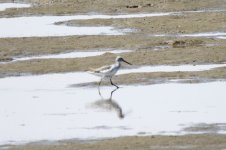Owen Krout
Well-known member

One last one that I dug out of the photos from April 26, 2021 from Yingkou, Liaoning, China. Best I can come up with on this one is Nordmann's Greenshank, but I haven't observed that before and it was only observed at range. On tidal mudflat.








